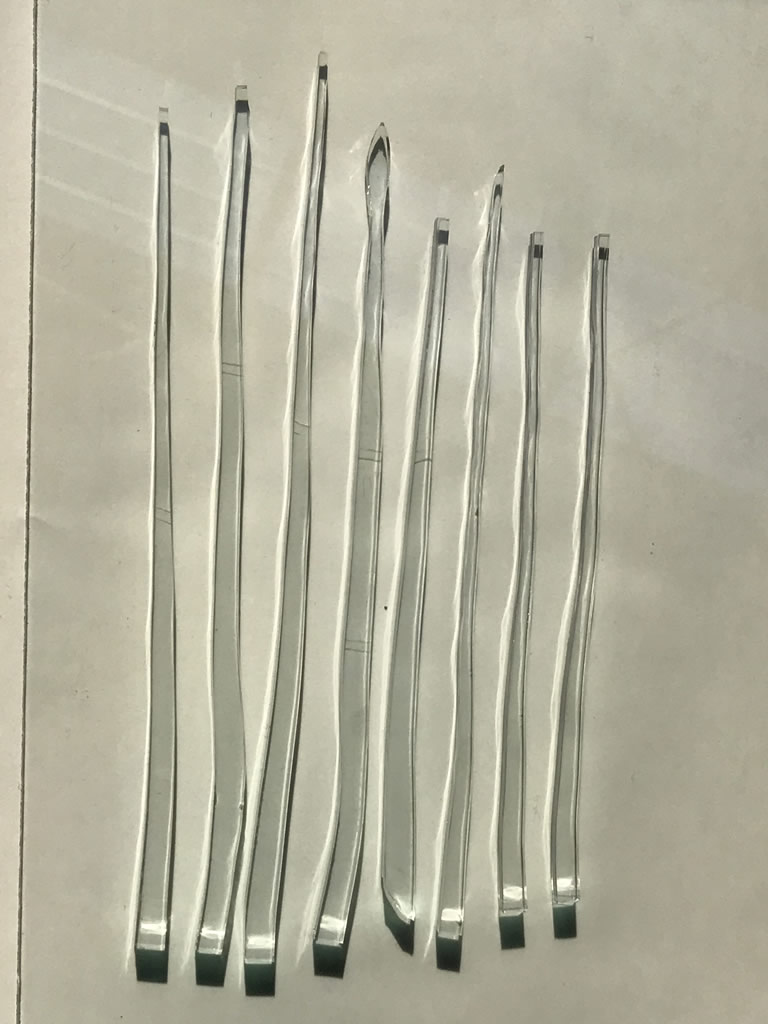
LETHAL GLASS IN NORTH AMERICA
The Standard governing certification of Toughened Safety Glass in the USA is ANSI Z97.1:2015
The Standard governing certification of Toughened Safety Glass in Canada is CAN/CGSB-12.1-2017. The testing requirements of the Canadian Standard are the same as those in ANSI Z97.1:2015
Both the US and the Canadian Standards allow lethal glass to be certified as Safety Glass and installed in buildings throughout North America in locations which are most at risk of incurring human impact.
Furthermore, tempered glass has a propensity to spontaneously shatter without any impact or with minor impact which it would be expected to sustain without any damage. When this occurs, the glass particles are often projected at high velocity, and if they are shards generated by certified tempered glass shown on this page and strike the bare skin of a person (as in a shower), serious cutting and piercing injuries are likely (as reported here), including death by loss of blood as reported here.
In the USA, the National Electronic Injury Surveillance System (NEISS) provides a platform where reported injuries from glass can be viewed. Please see https://www.cpsc.gov/Research–Statistics/NEISS-Injury-Data.
The situation in the USA is similar to that in Australia (and Europe) where the Standards Committees have been subverted to the detriment of millions of consumers who are exposed to lethal glass in their homes, schools and workplaces. It is not known to StandardsWatch whether the Canadian Standards Committee adopted the US test method without scrutiny, or whether any parties involved were aware of its inadequacy and knowingly allowed this to persist.
Tempered Safety glass which is certified to ANSI Z97.1:2015 is installed in doors, bathrooms and other locations that are subject to human impact (most often from children and teenagers) in order to minimise cutting and piercing injuries.
A document which details the sequence of events that resulted in the current lethal Standard in the USA can be viewed HERE.
An image of particles formed (usually in the hundreds) from inadequately tempered glass ¼” and thinner appears on this page. The lethal nature of these “particles” is substantiated by specific medical research which demonstrates that piercing at depths from 9 mm (3/8”) can be fatal. The research has been published, and can be accessed HERE.
It is critical that this situation be remedied by adopting a simple test which assures that certified safety glass does not generate lethal shards when broken. That simple test involves fracturing a test sample near its centre and ensuring that no area of the glass generates lethal shards by counting the number of particles in a 2” square in the area of coarsest fracture and ensuring that the count is at least 40 for the glass to be certified as Tempered Safety Glass. This method is used in the UN ECE R43 Standard to assure that tempered automotive glass breaks safely, and is accepted globally for that application.
If you want to effect change to this dangerous situation, you should contact the US Consumer Product and Safety Commission at clearinghouse@cpsc.gov, and in Canada the Canadian General Standards Board at ncr.cgsb-ongc@tpsgc-pwgsc.gc.ca.
You may also wish to consult the instructions referred to on the website page relating to the similar situation in Australia to assess whether there is any toughened glass in your home or school or workplace which is lethal, and if so, how you can make it safe.
You can also address an email to your Local, State and Federal elected representatives.
If the safety of your family, friends, work colleagues and the community is of concern to you, you should forward this page to all your contacts using email and social media so that they can take steps to reduce risk in their own homes, schools and workplaces and lobby the relevant government authorities to remedy the defective Standard.
Suppliers of toughened safety glass for installation in the USA and Canada are urged to ensure that product that they supply is safe and fit for purpose.
Installers, builders and building certifiers should insist that glass being installed in buildings is safe and fit for purpose, irrespective of it being certified to the current defective ANSI Z97.1:2015 Standard.
Consumers should not accept installation of unsafe glass in their homes, schools and workplaces.
